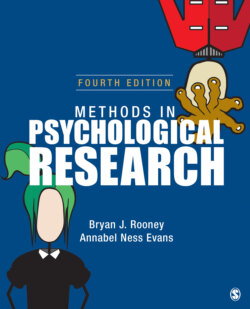Читать книгу Methods in Psychological Research - Annabel Ness Evans - Страница 93
На сайте Литреса книга снята с продажи.
Confidence Intervals
ОглавлениеConfidence intervals are used when we are interested in estimating population parameters. We are still making an inference from a sample to a population, and because of that, we are using probability estimates. But instead of reporting a p value indicating the probability that the null is true, we report the probability that our estimate about the population is true. Pollsters describing political candidates often use confidence intervals. For example, you may have read reports that, based on a poll of 1,000 respondents, 83% say they would vote for X if there were an election tomorrow. These statements are typically followed with a statement such as “These results are accurate to within 3 percentage points 19 times out of 20.” What does this mean? It means that, based on a sample of 1,000, the population support for the candidate is probably somewhere between 83% – 3% and 83% + 3%, or somewhere between 80% and 86%. Are the pollsters absolutely sure? No, they say that the estimate should be correct 19 times out of 20, or 95% of the time (19/20 = .95). So a p value of .05 from hypothesis testing becomes a confidence interval of .95, and, similarly, a p value of .01 becomes a confidence interval of .99 (reported as 99 times out of 100). Again, in hypothesis testing, we report a significance test with a p value that indicates the probability that the null is true. In confidence intervals, we report an interval within which we estimate the true population parameter to fall.
Important note to students
If you’re reading this material and starting to get anxious, relax! Our intention here is to discuss these inferential statistics at a conceptual level. As we indicated earlier, when you begin reading the literature, it is unlikely that you will see research using t tests or simple ANOVAs. What you will see are complex statistics that may be completely new to you. Our intention here is to give you enough information to understand what is being described in the literature.
